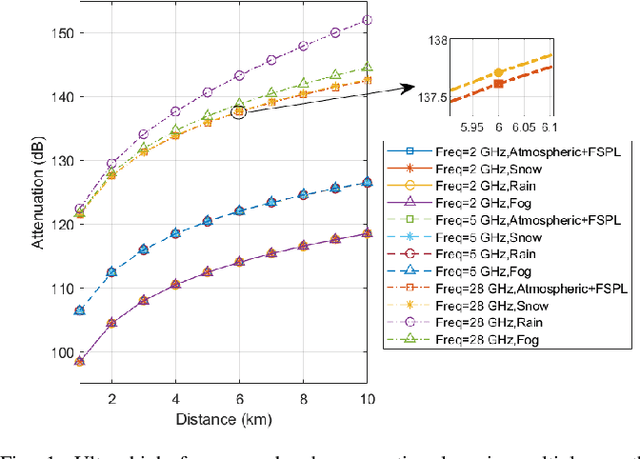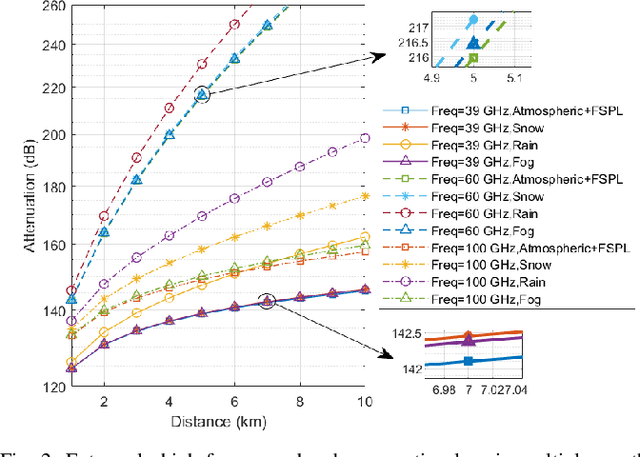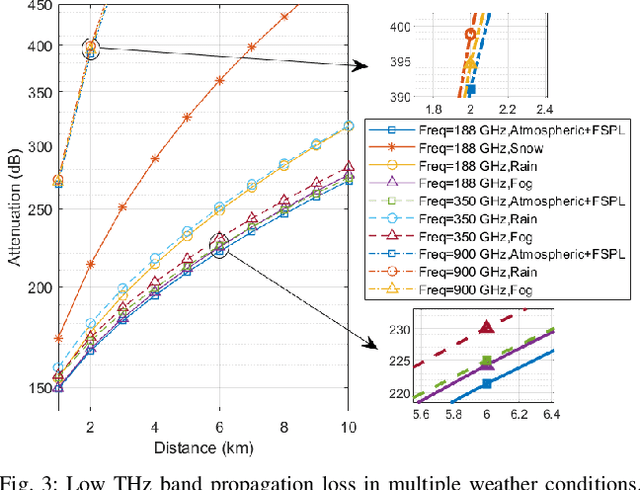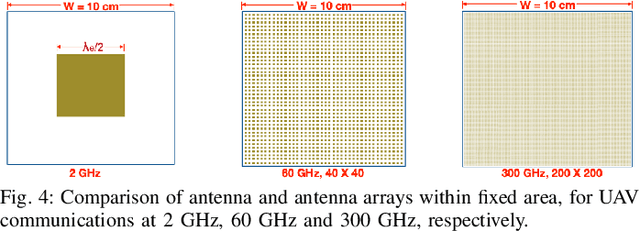Zhonghua Liang
Meteorologically Introduced Impacts on Aerial Channels and UAV Communications
Apr 14, 2021



Abstract:As 5G wireless systems and networks are now being globally commercialized and deployed, more diversified application scenarios are emerging, quickly reshaping our societies and paving the road to the beyond 5G (6G) era when terahertz (THz) and unmanned aerial vehicle (UAV) communications may play critical roles. In this paper, aerial channel models under multiple meteorological conditions such as rain, fog and snow, have been investigated at frequencies of interest (from 2 GHz to 900 GHz) for UAV communications. Furthermore, the link budget and the received signal-to-noise ratio (SNR) performance under the existing air-to-ground (A2G) channel models are studied with antenna(s) system considered. The relationship between the 3D coverage radius and UAV altitude under the influence of multiple weather (MW) conditions is simulated. Numerical results show that medium rain has the most effects on the UAV's coverage for UAV communications at millimeter wave (mmWave) bands, while snow has the largest impacts at near THz bands. In addition, when the frequency increases, the corresponding increase in the number of antennas can effectively compensate for the propagation loss introduced by weather factors, while its form factor and weight can be kept to maintain the UAV's payload.
 Add to Chrome
Add to Chrome Add to Firefox
Add to Firefox Add to Edge
Add to Edge